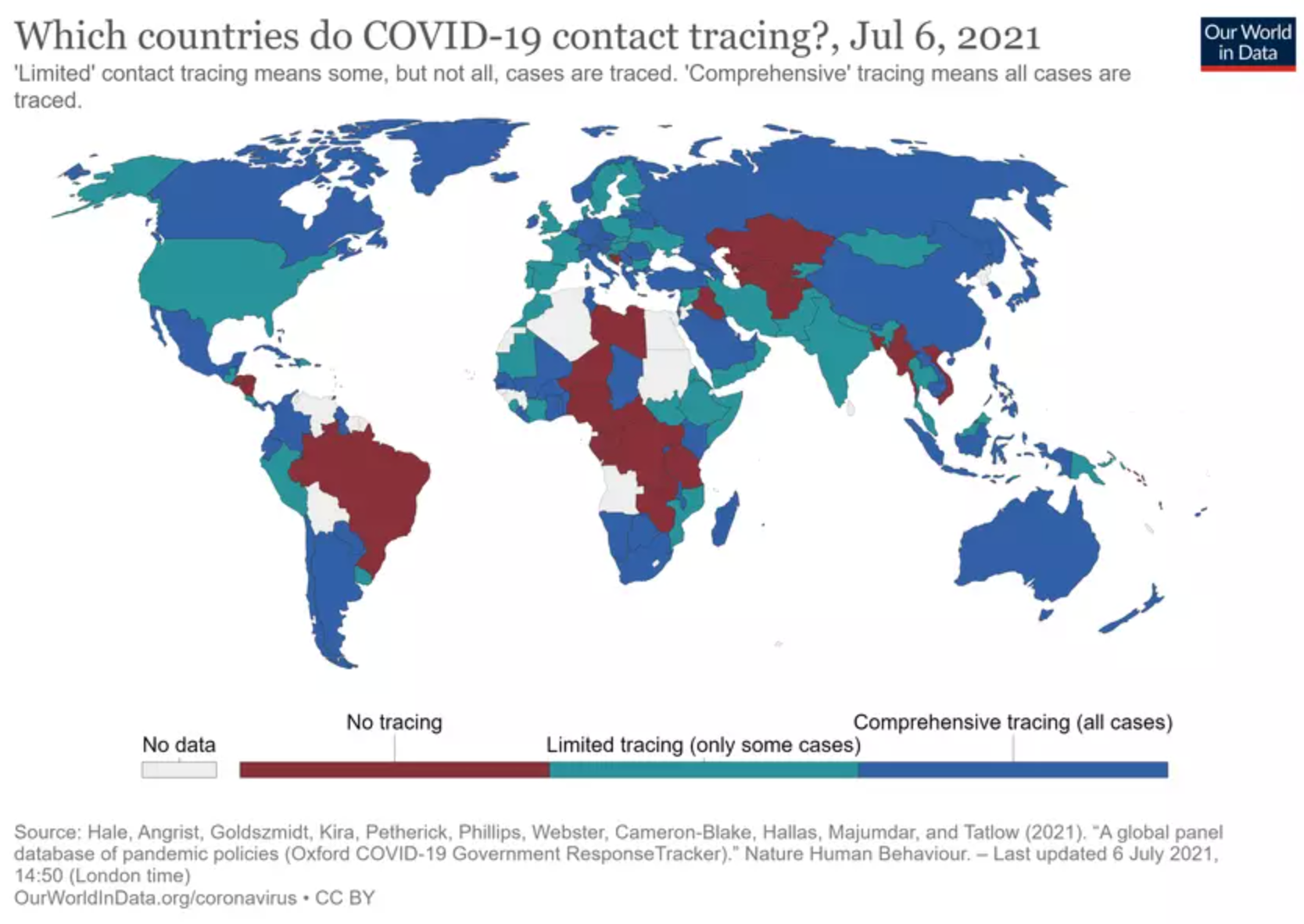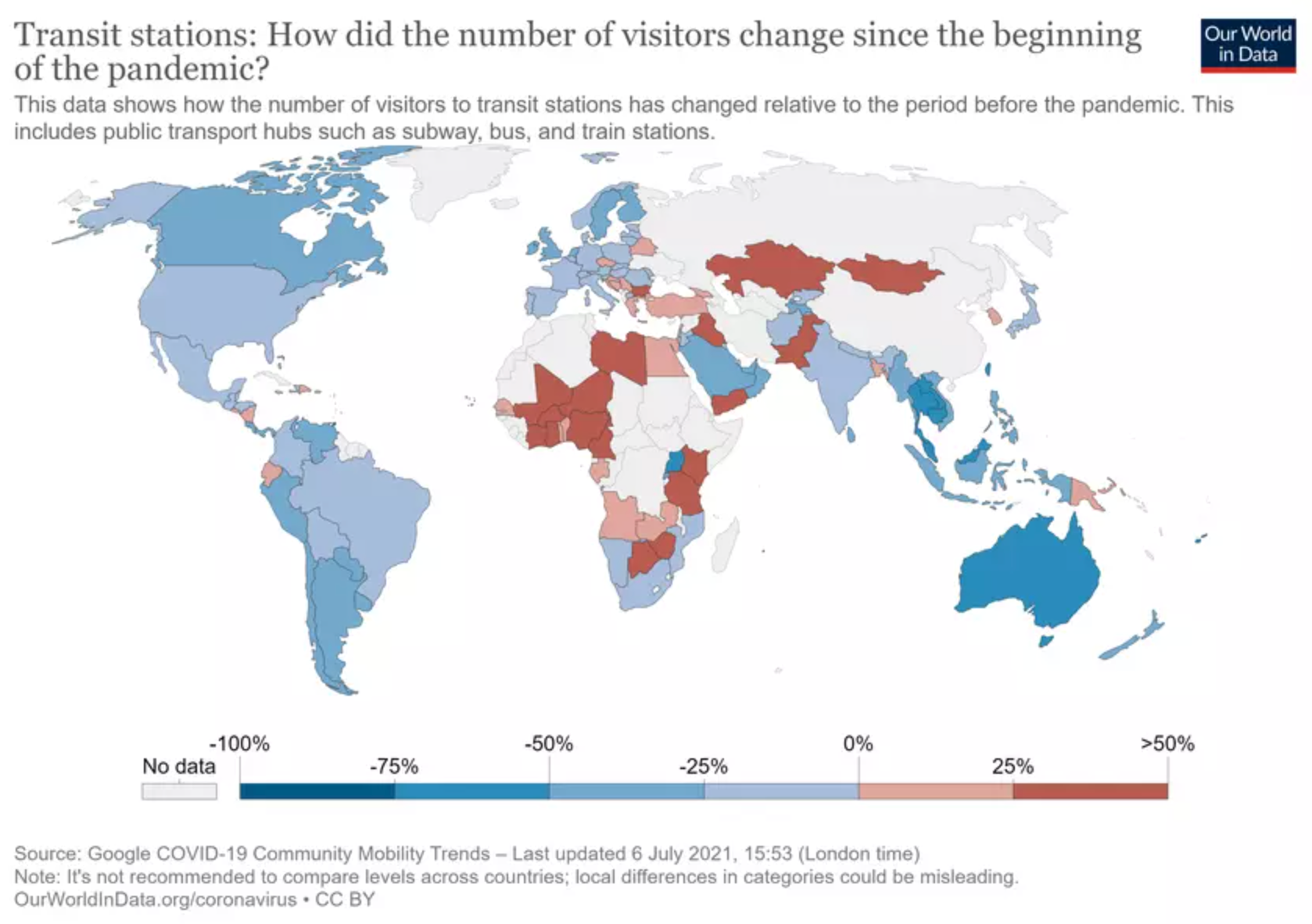7 Ways to Invest in Better Digital Technology to Fight Pandemics

A phone shows a COVID-19 contact tracing app in Berlin, Germany. By investing in better digital technology, public decision-makers can ensure that accurate, real-time information becomes available.
Photo: Adam Berry/Getty Images
The COVID-19 pandemic has challenged how public decision-makers manage a health crisis. To take informed action, decision-makers need accurate and timely information. Relevant information may be: How many COVID-19 cases are confirmed per day and region? What is the utilization of critical care beds? How do people respond to policy measures aimed at social distancing?
Numerous examples from the current pandemic demonstrate that governments have invested too few resources into digital tools for managing health crises. Many developed countries, such as Germany, Switzerland and the U.S., still rely upon “pen and paper” for data reporting. This includes a hybrid of fax, post and email. As a result, about 10% of the reported cases were lost at the peak of the epidemic. In several instances, hand-writing could not be deciphered, or counting was done by weighing the stack of printed faxes. Furthermore, the manual processing resulted in a reporting delay, especially after holidays and weekends where case numbers became available only with a delay of several days.
Other countries have learned from past epidemics and set up centers for disease monitoring using state-of-the-art digital technology. Take Singapore as an example: The country has rolled out mobile apps to alert individuals when an infected person was present in their immediate vicinity. On top of that, the data from these apps is directly integrated into monitoring tools and thus immediately available to public decision-makers.
Public Decision-Makers Need to Invest in Better Digital Technology
By investing in better digital technology, public decision-makers can ensure that accurate, real-time information becomes available. Eventually, this will support a more effective management of the current, as well as future, epidemics and pandemics.
Seven steps should be at the top of their agenda:
- Make digital technology a top priority. The current pandemic has demonstrated the value of digital technology. For better management of future pandemics and epidemics, governments should build sufficient expertise and resources for developing, expanding and deploying digital technology.
- Capture the complete data journey. A holistic approach to data collection and evaluation is needed, supported by integrated digital solutions. Examples are web-based interfaces for data collection and APIs (Application Programming Interfaces), which pull data from hospitals and testing sites in real-time. This can overcome severe time lags caused by manual reporting. Eventually, this should capture all relevant data, including information on conducted and confirmed tests, genomic sequencing, new hospitalizations and critical care resources. For evaluating data, publicly available dashboards have become best practice. Such data should be made further available to research through standardized data formats for impact assessments and forecasting.
- Take a lean approach. During epidemics, public leaders face two competing, ambidextrous challenges: managing the crisis while simultaneously scaling digital technologies. Importantly, addressing either should not be at the expense of the other since they are complementary. It is crucial to address both simultaneously. Digital technology, for instance, reduces the workload associated with “pen and paper” data collection. In order to develop end-to-end solutions when time and resources are scarce, governments should adopt a lean approach. Thereby, public decision-makers start with a minimal working product and then incrementally add new features to quickly improve current practice. Here, open source software is particularly valuable as it can expedite development time.
- Embrace privacy. The use of digital tools for disease monitoring may violate privacy and is often perceived as a risk. However, we argue the opposite: The current practice, where sensitive personal data is manually exchanged via phone or fax, is, by default, unencrypted. Any effort towards digital solutions provides opportunities for incorporating security mechanisms (such as encryption or differential privacy) and strengthens the privacy of individuals.
- Integrate new data sources. The use of digital technology for data collection opens the possibility of integrating new data sources. Recent research has demonstrated the benefits of telecommunication data in assessing the effectiveness of social distancing policies and forecasting the future spread of COVID-19. While adhering to legal frameworks, governments should strive to make full use of the potential of digital technology by considering all sources of data available for informed decision-making.
- Evaluate effectiveness. Digital technology greatly improves the ability to evaluate the effectiveness of policies targeted at social distancing. This allows for impact assessments and fosters evidence-based action. As an example, it’s estimated that digital contract tracing apps have averted around half a million COVID-19 cases in the United Kingdom. By assessing policies and communicating their effectiveness, governments gain trust among the public.
- Act now. While case numbers are flattening in many countries, this should not be treated as a sign to postpone investments in digital technologies. On the contrary, many countries face new mutations of COVID-19 and need to extend monitoring. Likewise, dashboards help public decision-makers assess how vaccines are distributed and inform where more resources for vaccination programs are needed. Finally, better digital technology is needed in preparation for future epidemics and pandemics.
The COVID-19 pandemic has unravelled the importance of digital technology for managing health crises in an unprecedented manner. Governments should now revisit past lessons and take strategic action. In particular, governments need to invest in better digital technology to prepare for future health crises.
This piece was originally published on The World Economic Forum.







